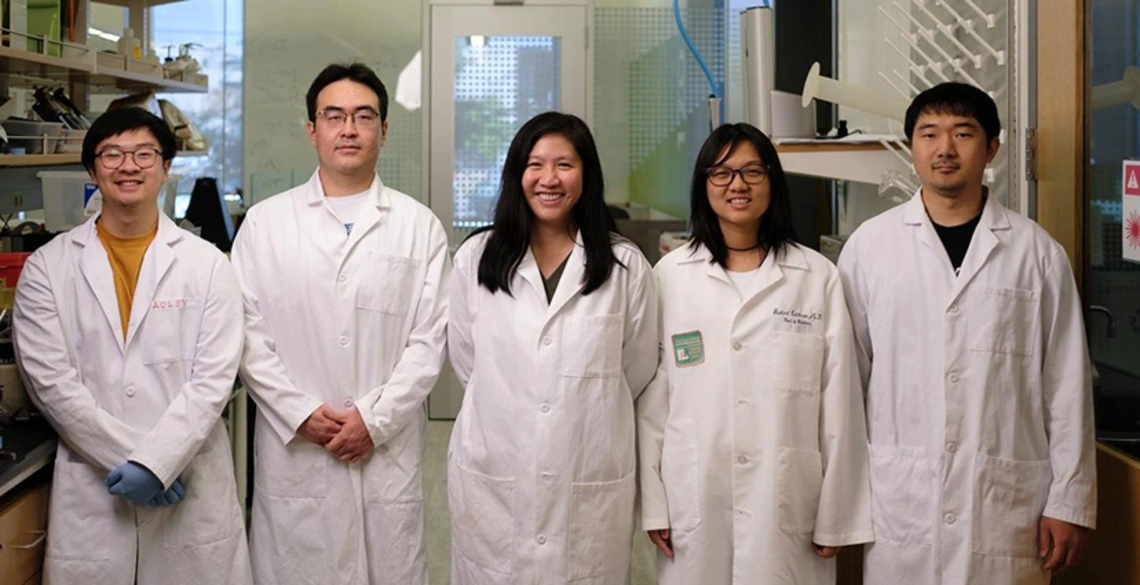Su wins $2.1M to develop handheld chemical sensor

Associate professor of biomedical engineering and optical sciences, Judith Su (center), leads research on the FLOWER sensing device.
The U.S. Army has awarded a team of researchers led by BME associate professor Judith Su $2.1 million to build a handheld version of her record-breaking FLOWER sensing device for active military personnel. The device picks up target compounds at 600 particles per liter being useful for drug testing and health diagnostics. The military expects it may also preserve the lives of active-duty service members.
Su received $2.8 million from the U.S. Defense Threat Reduction Agency four years ago to conduct phase 1 research for her project, which is called FORWARD: FLOWER-Based Optical Resonators for Widely Applicable Reagent Detection.
Phase 1 tested FLOWER's detection capabilities on tiny amounts of airborne chemical warfare agents. Su, principal investigator at the university's Little Sensor Lab and a Craig M. Berge Faculty Fellow, said FLOWER detected part-per-trillion concentrations of DIMP, a byproduct of sarin, a highly toxic nerve agent that is clear, odorless and tasteless. It is incredibly difficult to detect without advanced tools, making it a dangerous obstacle for the U.S. Army.
"We were also looking at things like nitric oxide, ammonia, formaldehyde, all these different chemicals," Su said. "We were able to demonstrate record levels of sensitivity."
Unlike other sensing devices, FLOWER doesn't require compound tagging, which is the addition of a fluorescent or radioactive tag to make a target compound stand out during testing. This advantage potentially makes FLOWER a cost-effective solution to identify gas particles on the go, Su said.
Advancing into phase 2, Su will develop a prototype that takes FLOWER sensors off the lab bench and into the general population. Anyone could be an operator.
"We want to make it as accessible as possible," she said. "Military personnel who want to know if it's safe to enter a room can see a red or green light response."
"We're making it a translatable device from the laboratory to real-world chemical sensing solutions."
